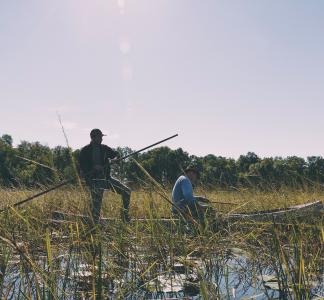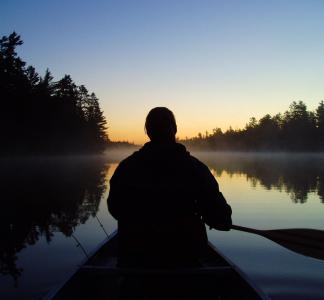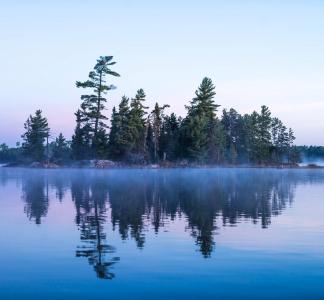Boundary Waters officially safe from mining for next 20 years

Boundary Waters Canoe Area Wilderness, Minnesota
Joanna GIlkeson, USFS, Flickr
Interior sets moratorium after public outcry
Interior Secretary Deb Haaland has signed a 20-year ban on mining in the Boundary Waters’ Rainy River Watershed, the ancestral home of the Ojibwe people and a landscape rich with wildlife habitat and cherished outdoor recreation areas.
This news means the nearby Boundary Waters Canoe Area Wilderness, plus other downstream protected areas like Voyageurs National Park and surrounding communities, will be protected from the toxic effects of sulfide-ore copper mining, which the U.S. Forest Service has said could indefinitely threaten the food sources of Native American and low-income communities
In addition to serious health and environmental risks, studies have estimated a mine next to the Boundary Waters would cost the region more than $1 billion in lost income connected to outdoor recreation and travel.
The decision to keep mining away from the area for the next two decades “recognizes the importance of safeguarding the Boundary Waters from pollution associated with extractive development, mitigating the extinction crisis and helping to achieve the Biden administration’s America The Beautiful conservation goals,” said Jamie Williams, president of The Wilderness Society, in a statement. “The movement to protect the Boundary Waters is truly a locally led initiative, and we are grateful for the thousands of Minnesotans who made their voices heard and said ‘no way’ to toxic mining at the doorstep of this national treasure.”
The area will now be protected from the toxic effects of mining, which could indefinitely threaten the food sources of Native American and low-income communities
The Boundary Waters Canoe Area Wilderness is a landscape of lakes, rivers, red and white pine forests and other habitat—part of a 4 million-acre boreal forest ecosystem extending into Canada that provides a crucial safe haven and migration corridor for wildlife in the age of climate change. Among others, the area supports wolves, moose and otters and boasts waters lively with pike, walleye and other fish. It also sits on the Mississippi Flyway, a regional bird-migration path, and is a hallowed destination for spotting birds like loons, wood warblers and hundreds of other species.
Learn more about why it’s critical we protect the Boundary Waters from toxic mining.
People literally need wildlife to survive. Climate and extinction crises jeopardize that
Lorie Shaull, Flickr
Timeline: Explore how mining threatens the Boundary Waters
briandjan607/Flickr
Wilderness Society sues Trump administration for documents on proposed mining near Boundary Waters wilderness
Erik Fremstad



